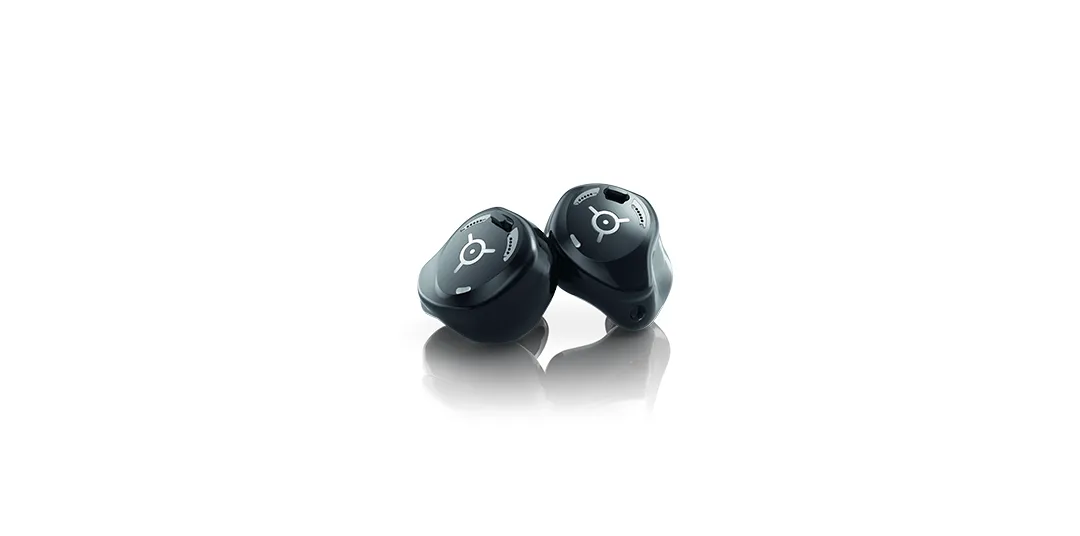The Facts About Hearing Loss in Children | Connect Hearing

The Facts About Hearing Loss in Children | Connect Hearing
15 min.
Publication Date: July 18, 2019
Learn about how common hearing loss is in children, how to recognize hearing loss, the causes of hearing loss, the types of hearing loss, how to prevent hearing loss, and hearing loss treatments for children.
How common is hearing loss in children?
According to reports from the Center for Disease Control, hearing loss affects 1.7 out of every 1,000 babies screened, and five out of every 1,000 children from ages three to 17. Hearing loss can occur on a spectrum ranging from mild to total hearing loss, also called profound hearing loss.
How to recognize hearing loss in infants?
Localization
Localization, or the ability to pinpoint the source of a sound, is an easy skill to observe in babies.
You should start by looking for your newborn to widen or move their eyes in reaction to loud sounds.
At five or six months, you can further test their localization ability by making soft sounds such as rattling or whispering behind or beside them while they are looking forward.
Normally, your baby should turn their head towards the sound.
Development milestones
Below are milestones to look for in your child’s speech and hearing at each development stage.First four months:
Becomes startled at loud sounds
Recognizes a familiar voice by becoming calm
Becomes awoken or reacts to loud noises
Responds to your voice by smiling
Four to nine months:
Notices or responds to noisy toys
Responds to the speech of others by smiling
Turns their head towards familiar sounds
Recognizes hand motions such as waving
Nine to 15 months:
Responds to their name
Begins repeating simple sounds
Uses their voice to get your attention
Understands basic requests
15 to 24 months:
Builds spoken vocabulary
Follows basic vocal commands
Points to familiar objects that you name
Takes interest in songs, rhymes, and stories
It is possible for children to develop hearing loss after the toddler stage. Below are some signs to watch for in your child if you believe they may be suffering from hearing loss:
Finds it challenging to understand what others are saying
Speaks differently than children their age
Turns up the volume of the TV and electronic devices very high
Does not reply when they are called
Is experiencing academic problems
Complains of earaches or noises
Says “what” or “huh” repeatedly
Causes of hearing loss in kids
Pediatric hearing loss can be present at birth, which is called congenital hearing loss
or be acquired after birth, which is called acquired hearing loss.
Congenital hearing loss
Congenital hearing loss happens at birth and can have many contributing factors. It can be difficult to know the exact cause.
Congenital hearing loss can be caused by both genetic and non-genetic factors, but roughly 50% of all cases of congenital hearing loss are due to genetic factors.
Genetic factors, or those inherited from parents, that can lead to hearing loss include:Autosomal recessive hearing loss, which accounts for roughly 70% of genetic hearing loss cases. This is when neither parent has hearing loss, but each parent carries a recessive gene for hearing loss and passes it onto the child.
Autosomal dominant hearing loss, which accounts for roughly 15% of genetic hearing loss. This is when one parent carries a dominant gene for hearing loss and passes it onto the child.
Genetic syndromes, such as: Down syndrome, Usher syndrome, Treacher Collins syndrome, Waardenburg syndrome, Crouzon syndrome, and Alport syndrome.
Birth complications, such as: maternal infections, lack of oxygen, or blood transfusions. Also, premature birth, nervous system or brain disorders, gestational or maternal diabetes, and drug or alcohol use or smoking during pregnancy.
Acquired hearing loss
Hearing loss can also develop after birth, and in these cases, it is called acquired hearing loss. Acquired hearing loss can happen in a number of ways, including: a perforated eardrum, premature birth, Otosclerosis or Meniere’s disease, a serious head injury, untreated or frequent ear infection, and exposure to secondhand smoke.
Types of hearing loss in children
Conductive hearing loss
Conductive hearing loss occurs when there is a problem or obstruction keeping sound from getting through the outer or middle ear, such as wax buildup or fluid in the ear. Conductive hearing loss is not always permanent and can often be treated with medication or surgery.
Some common causes of conductive hearing loss can include: ear infections (otitis media), ear wax (cerumen), and swimmer’s ear (otitis externa).
Sensorineural hearing loss
Sensorineural hearing loss occurs as the result of a problem within the inner ear—specifically the vestibulocochlear nerve. Sensorineural hearing loss is permanent.
Causes of sensorineural hearing loss can include: abnormal development in the womb, certain medications, injury from certain diseases and infections, fluid backup, tumors, aging, and overexposure to loud noise.
Mixed hearing loss
Mixed hearing loss is a combination of conductive and sensorineural hearing loss, and is permanent.
How to prevent hearing loss in infants
There are several steps you can take to help prevent hearing loss in children, such as: proper nutrition, regular visits to your obstetrician while pregnant, recommended vaccinations, seeking immediate treatment at the first sign of an ear infection, and limiting your child’s exposure to loud noise.
What are hearing loss treatments for children?
Hearing aids
Hearing aids are devices worn in or around the ear that make sounds louder and easier to be heard. There are several different style options for hearing aids for your child, and technology has progressed to make them smaller and more discrete while offering improved hearing assistance.
Cochlear implants
Cochlear implants are devices implanted into a patient and work differently than hearing aids. They work to pick up sounds and bypass specific areas where hearing is difficult for the patient. Cochlear implants are a more permanent treatment option, and you would have to consult with your audiologist to decide if they are the right choice for your child.
Speech and language therapy
Speech and language therapy should be a part of your child’s care plan to help them learn to effectively communicate with those around them.
If you suspect your child is suffering from hearing loss, please see a medical doctor for a hearing evaluation or newborn hearing screening immediately.



